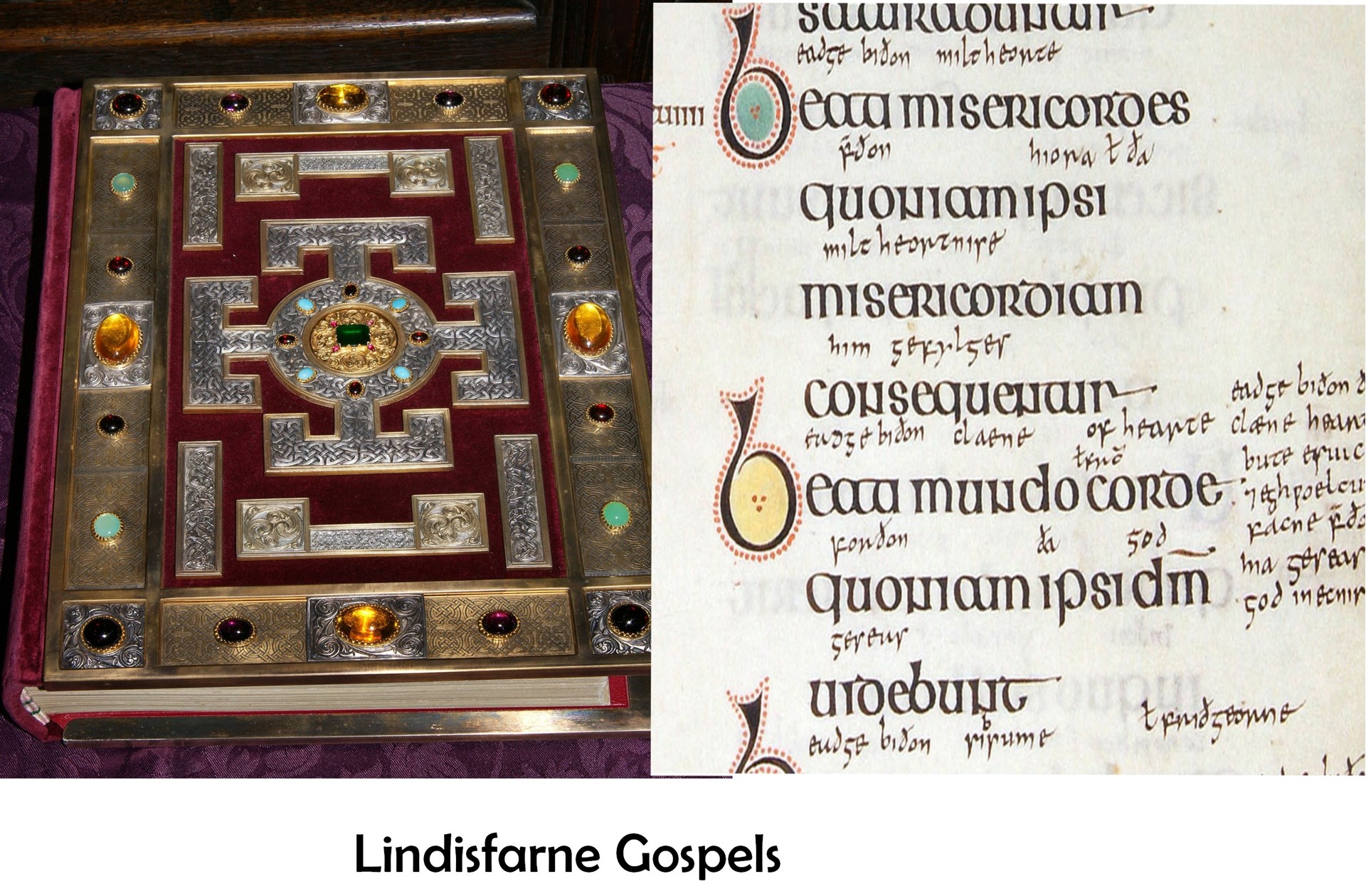Lindisfarne Gospels (3rd November 2021)
The Lindisfarne Gospels
Presented by Mike Thompson 3rd November 2021
Recorded by Rick Purnell
The miraculous survival of the Lindisfarne Gospels
Mike Thompson gave a faultless slide show and talk about the creation of a handwritten and illustrated crafted copy of the Gospels by monk Eadfrith of the Lindisfarne Priory in C 710-720AD. It is thought this was a copy of the AD390 St Ambrose Exemplar.
The Priory was founded by an Irish monk St Aiden in 635 AD but most famous of holy men was the Prior St Cuthbert (635-687 AD) whose mortal remains were later taken on a pilgrimage with the gospels contributing to its remarkable survival.
There was no ‘England’ at that time but smaller kingdoms such as Wessex and Mercia. The North-east was often ransacked by Vikings whose plundering activities also helped save the gospels.
In C 875 the monks abandoned Lindisfarne and set forth in pilgrimage for many years with St Cuthbert’s elm sepulchre and treasures (including the Gospels) to avoid further pillage by the Vikings ending up at the former Roman settlement of Chester-Le-Street near Ripon in 883 AD. During this sojourn, priest Aldred in 950-980 AD annexed to the Latin text of the Gospels with the first known translation with notes of the Bible into Anglo Saxon the common English of the day.
The Norman Conquest brought stability and St Cuthbert (and the Gospels) moved to the new Norman Cathedral in Durham in 1104.The Gospels sort of survived the Reformation of King Henry VIII, C1539, when the decorated binder was ripped off the Gospels and St Cuthbert’s tomb desecrated for its valuables but one of the retinues saved what was left of the Gospel text and removed to the Tower of London. In 1753 the Gospels were bequeathed to the British Museum as part of the Cotton collection then moved to The British Library.
In 1852 Bishop Maltby of Durham Cathedral commissioned and new bejewelled facsimile book binding cover fashioned by London Silversmiths in 1853.
There have been other replicas made by a Swiss firm costing £20,000 each.
The speaker has had the privilege of looking at the Gospels in person in awe of its splendour and remarkable history of 1300 years’ survival. The photograph shows the updated cover and content with, added explanation, of the Lindisfarne Gospels.
On behalf of the 24 Teignmouth Probus club members, the vote of thanks by Malcolm Adams.
The next meeting is on 17th November at Richard Newton Hall with a talk on “The Space Update” by David Norman.
